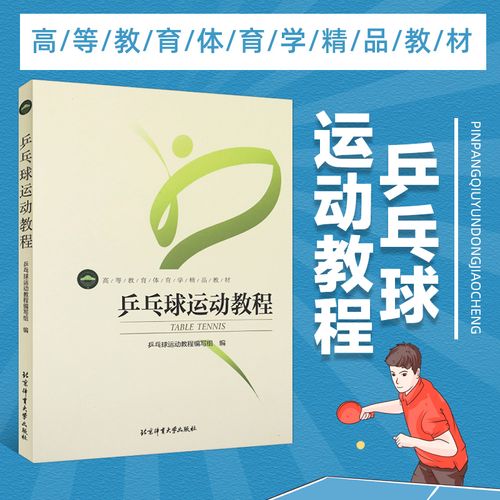乒乓球教材人教版
Title: Crafting Effective Table Tennis Instructional Materials for Physical Education
Introduction
Table tennis, commonly known as ping pong, is a dynamic sport that requires agility, precision, and strategy. As an essential component of physical education curricula, instructional materials play a pivotal role in facilitating effective learning experiences for students. Crafting table tennis instructional materials for physical education necessitates a comprehensive understanding of the sport's fundamentals, teaching methodologies, and student engagement strategies.
Table tennis encompasses various fundamental aspects, including:
- Stroke Techniques: Forehand drive, backhand drive, topspin, backspin, and other stroke techniques are essential components of table tennis.
- Footwork: Proper footwork is crucial for maintaining balance, positioning, and executing shots effectively.
- Rules and Regulations: Understanding the rules governing table tennis matches is essential for fair play and competitive engagement.
- Equipment: Knowledge about table tennis equipment, including paddles, balls, and playing surfaces, is necessary for optimal performance.
Effective instructional materials for table tennis should incorporate the following elements:
- Clear Demonstration: Visual aids such as videos, diagrams, and live demonstrations help students grasp proper techniques and strategies.
- Progressive Learning: Structured lesson plans that gradually increase in complexity allow students to build skills incrementally.
- Interactive Activities: Engaging activities such as drills, minigames, and challenges promote active participation and skill development.
- Feedback Mechanism: Providing constructive feedback and opportunities for selfassessment encourage continuous improvement and skill refinement.

Integrating table tennis instructional materials with broader physical education curricula enhances the overall learning experience. This integration can occur through:
- CrossCurricular Connections: Relating table tennis concepts to subjects like physics (ball trajectory), mathematics (scorekeeping), and biology (physical fitness) enriches students' understanding.
- Inclusive Approach: Tailoring instructional materials to accommodate diverse learning styles and abilities ensures equitable participation and skill development.
- Health and Wellness Emphasis: Emphasizing the physical and mental health benefits of table tennis fosters a holistic approach to physical education.
Assessing student progress and achievement in table tennis involves:
- Performance Evaluation: Observing students' execution of techniques during practice sessions and matches provides valuable insights into their skill development.
- Skills Testing: Conducting periodic assessments to evaluate students' proficiency in stroke techniques, footwork, and game strategies helps track progress over time.
- SelfReflection: Encouraging students to reflect on their strengths, areas for improvement, and goalsetting promotes autonomy and selfdirected learning.
Creating effective table tennis instructional materials for physical education requires careful planning, attention to fundamentals, and a commitment to student engagement and learning outcomes. By incorporating clear demonstrations, interactive activities, curriculum integration, and robust evaluation mechanisms, educators can cultivate a supportive learning environment where students can thrive and develop a lifelong appreciation for the sport.
